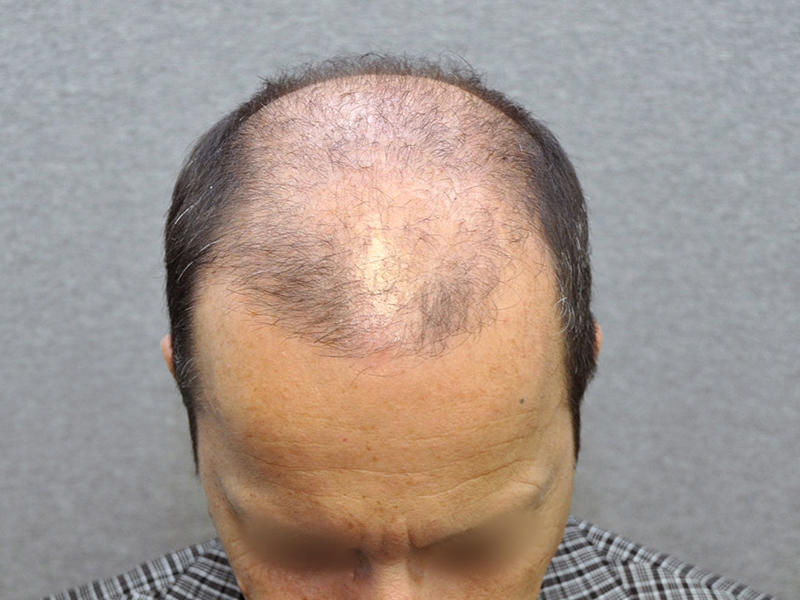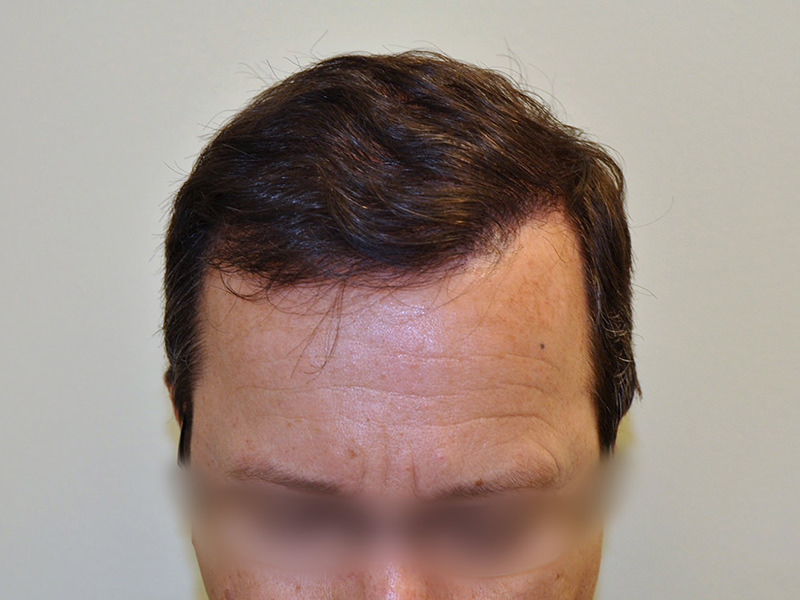
Is Your Hairline Maturing or Receding?
When should you consider seeing a hair loss doctor in Vaughan, Toronto, and Davenport?
Your hairline plays a crucial role in defining your appearance, and any change to it can significantly impact your self-confidence. A complete, thick hairline is often considered ideal; anything less can make you question your overall appearance. As you age, you may notice changes to your hairline. The good news is that these changes are only sometimes cause for concern. Most people experience a change in their hairline as they age. However, it’s essential to know whether these changes are due to a natural hairline maturing or a receding hairline, an early sign of baldness. In this guide, we’ll help you understand the difference and decide if it’s time to seek help from experts like Dr. Philip Solomon and Dr. Mark Korman, board-certified ENT surgeons in Vaughan, Toronto and Davenport with over 40 years of combined experience in FUE and FUT hair transplant procedures.
Understanding Your Hairline
As we age, our hairline naturally changes. You may notice that the gap between your eyebrows and hairline widens or that you find hair in your comb in the morning. While these observations can be worrying, it’s important to distinguish whether they’re part of the natural maturing process or a sign of a receding hairline. Seeking advice from professionals such as Dr Philip Solomon and Dr Mark Korman, who have decades of expertise in hair restoration procedures, can help ease your concerns.
What is a Mature Hairline?
When you’re young, your hairline is called ‘juvenile’. This line is generally rounded, with edges that cross directly over the top of the forehead, and the hair is rich in colour and thickness. The hairline transitions to the ‘mature’ state with age, usually between 25 and 30. During this process, your hairline may recede slightly and take on a more pronounced M or V shape, often called a ‘widow’s peak.’ This is a natural evolution that occurs gradually over several years.
By 30, the hairline is fully formed and unlikely to change significantly after that. Although you may notice some hair thinning, this maturation process is natural, and there is generally no cause for concern. However, suppose you feel your hairline is deteriorating further. In that case, consulting FUE and FUT hair transplant experts Dr Philip Solomon and Dr Mark Korman can help you decide the best action.
What is a Receding Hairline?
A receding hairline is the hallmark of baldness, known scientifically as androgenetic alopecia. This common condition affects millions of people and causes progressive hair loss on the hairline and scalp, often creating a pronounced M or U shape. Unlike a mature hairline that stabilizes, a receding hairline worsens over time and can eventually lead to complete baldness.
Hairline receding can occur at any age and progress rapidly. If left untreated, the balding process will continue, so early intervention is necessary. At Follicle HT with Drs. Philip Solomon and Mark Korman, you have access to over 40 years of combined experience in hair transplant techniques, including FUE and FUT surgery, which can effectively address this problem.
Causes of Hairline Changes
Several factors contribute to changes in your hairline, including:
- Genetics: If you have a family history of pattern baldness, you’re more likely to experience it yourself.
- Hormones: High levels of dihydrotestosterone (DHT) cause hair follicles to shrink, leading to hair loss.
- Ageing: Your hairline naturally matures as you age, moving slightly backward.
- Stress: Chronic stress can lead to excessive hair loss due to the hormone cortisol.
- Diet: A poor diet lacking essential nutrients can weaken hair, leading to thinning and hair loss.
Working with Dr. Philip Solomon and Dr. Mark Korman allows you to explore personalized treatments designed to address these underlying causes and restore your hairline.
Diagnosing Your Hairline
To determine whether your hairline is maturing or receding, you need to know your family history, your age and the appearance of your hairline. You may be genetically predisposed to hair loss if you have a family history of baldness. Also, receding hairlines often develop more dramatically than maturing hairlines, resulting in uneven hair loss.
Suppose you need to figure out how your hairline is progressing. In that case, a consultation with hair restoration experts such as Dr. Philip Solomon and Dr. Mark Korman, who specialize in FUE and FUT surgical procedures, can help you diagnose your condition and recommend effective treatment options.
Non-Surgical Treatment and Management
If you’ve noticed that your hair is receding, there’s no need to worry. Several non-surgical treatments are available, including drugs such as finasteride and minoxidil, which promote hair growth and slow down hair loss.
In addition to medical treatments, lifestyle changes such as reducing stress, improving diet and adopting healthier hair care practices can help restore your hairline.
Hair Transplant Surgery: FUE Technique
A FUE (Follicular Unit Extraction) hair transplant is one of the most popular and effective surgical treatments for those seeking a long-term solution. This minimally invasive procedure involves extracting healthy hair follicles from a donor area and transplanting them into areas affected by hair loss. With over 700,000 FUE transplants performed worldwide in 2021, it’s clear why this method is favoured for its natural-looking results and quick recovery times.
With the expert guidance of Dr. Philip Solomon and Dr. Mark Korman, both board-certified ENT surgeons with extensive experience in FUE and FUT surgery, you can regain a youthful, healthy hairline and boost your confidence.
Contact Follicle HT today to learn more about our treatments and how we can help you restore your hairline.
Book a consultation by visiting – FUE hair Transplant Toronto or call us at – (905) 764-7799


